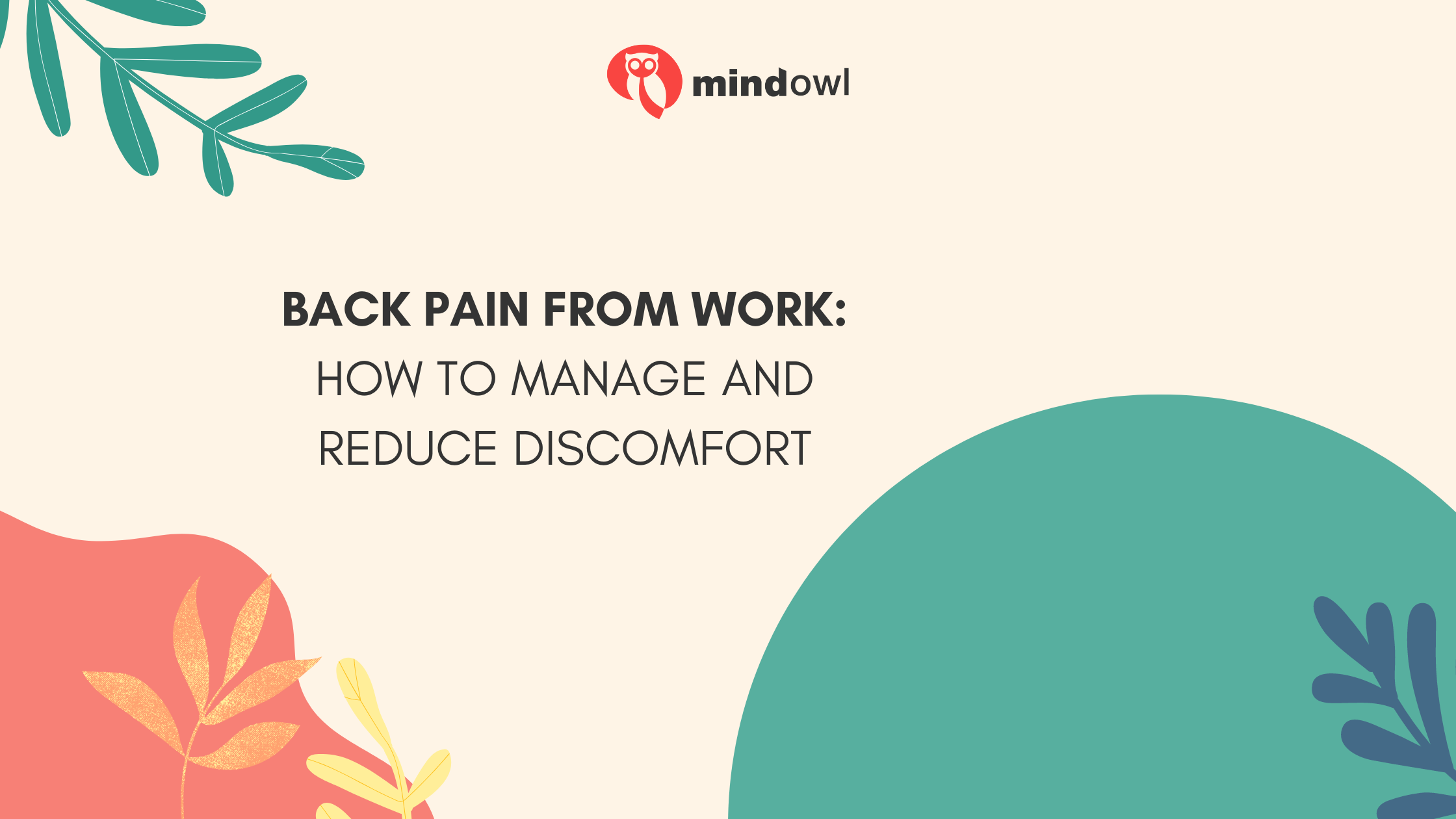Back pain is a prevalent issue among workers in all industries. Whether you spend your days seated at a desk, on your feet all day, or performing manual labor, you may experience various types of back pain as a result of your job. Understanding the types of back pain that can arise from different kinds of work, how to find relief, and whether you might qualify for workers’ compensation can help you manage this common health issue.
Types of Back Pain Related to Work
Back pain can affect different parts of the back, and its severity and causes depend on the nature of your work. Office workers and manual laborers experience distinct types of pain due to the different physical demands of their jobs.
Desk Job-Related Back Pain
For those who work in an office setting, prolonged sitting, poor posture, and lack of movement often contribute to back pain. Many desk workers suffer from upper back and neck pain due to hunching over a computer or sitting for extended periods without proper lumbar support. Lower back pain is also common, as slouching or sitting in a non-ergonomic chair can strain the lumbar spine.
Common problems for desk workers include muscle stiffness in the upper back, tension in the shoulders and neck, and discomfort in the lower back. Over time, these issues can lead to more severe conditions such as herniated discs or chronic pain.

Back Pain from Standing or Walking
Employees in the service industry, such as retail workers, restaurant staff, and others who spend their day on their feet, often experience back pain from prolonged standing or walking. Unlike desk workers, these employees are constantly moving or standing in place, which can cause strain on the lower back and legs.
Prolonged standing can lead to muscle fatigue, spinal compression, and lower back pain, as the back muscles are forced to work harder to maintain posture throughout the day. Additionally, walking on hard surfaces, such as concrete floors in retail stores, can further contribute to discomfort. Service industry workers may experience pain not only in the lower back but also in the upper back and shoulders if they frequently carry items like trays, boxes, or other heavy objects.
Taking regular breaks, stretching, and wearing supportive shoes can help alleviate some of the discomfort caused by standing and walking, but workers in these roles may still experience chronic back pain over time.
Manual Labor-Related Back Pain
For individuals in physically demanding jobs like construction or warehouse work, back pain tends to affect the lower and mid-back. Lifting heavy objects, repetitive movements, and improper body mechanics can strain the back muscles, leading to pain that ranges from mild discomfort to severe injuries.
Manual laborers are at risk for muscle strains and sprains, especially when lifting heavy loads without proper support. Repeated stress on the back can also result in more chronic conditions, such as degenerative disc disease, which causes ongoing back pain and stiffness. In extreme cases, laborers may experience slipped discs, which can lead to long-term disability if not properly treated.
Recommendations for Pain Relief
Whether your back pain is caused by desk work or physical labor, there are steps you can take to alleviate discomfort and prevent future issues. Incorporating stretches, exercises, and ergonomic practices into your routine can make a significant difference. You might also consider using a nerve pain cream for targeted relief, especially if your discomfort stems from irritated or damaged nerves.
Stretches for Back Pain Relief
Stretching is one of the simplest ways to relieve back pain, as it helps to loosen tight muscles and improve flexibility.
- Neck Stretch: Sit up straight and gently tilt your head to one side, bringing your ear toward your shoulder. Hold for 20-30 seconds, then switch sides. This stretch targets tension in the upper back and neck.
- Cat-Cow Stretch: Get on your hands and knees, arch your back toward the ceiling (cat position), and then dip it downward while lifting your chest (cow position). This dynamic stretch helps loosen both the upper and lower back.
- Seated Forward Bend: Sit on the floor with your legs straight in front of you, then gently reach toward your toes. This stretch helps relieve tension in the lower back and hamstrings, which can contribute to back pain.
Exercises for Core and Back Strength
Strengthening the muscles that support your back, including the core, can help reduce pain and prevent future injuries.
- Planks: This exercise strengthens the core, which helps support your entire back. Hold a straight-arm plank for 30 seconds, ensuring your body stays in a straight line.
- Superman: Lie on your stomach with your arms extended in front of you. Lift both your arms and legs off the ground, hold for a few seconds, and lower. This exercise strengthens the muscles along your spine.
- Bridge: Lie on your back with your knees bent and feet flat on the floor. Lift your hips toward the ceiling, hold for a few seconds, and lower back down. This strengthens both the core and lower back.
Ergonomic Adjustments and Other Pain Relief Tips
Improving ergonomics is crucial for both desk workers and manual laborers. For those in office environments, investing in an ergonomic chair with proper lumbar support can alleviate back pain. Adjusting the height of your monitor to eye level and using a footrest can also help reduce strain on the neck and back.
Manual laborers should focus on using proper body mechanics when lifting and carrying heavy objects. Learning how to bend at the knees and lift with the legs, rather than the back, can prevent injuries. Taking regular breaks to stretch and rest the back muscles is also key.

Can You Get Workers’ Compensation For Back Pain?
In some cases, back pain resulting from your job may qualify for workers’ compensation. Workers’ compensation is a type of insurance held by your employer that covers work-related injuries. However, proving that your back pain is caused by your job can sometimes be challenging, especially if the pain developed over time.
If your back pain stems from a specific incident, such as lifting a heavy object and experiencing immediate pain, filing a workers’ compensation claim may be more straightforward. In these cases, medical documentation and any witnesses to the incident can support your claim. However, if your back pain results from repetitive strain or long-term wear and tear, it may require more thorough documentation to prove the work-related nature of the injury.
Chronic back pain that develops over time from work-related activities, such as repetitive lifting or prolonged sitting, may also be eligible for workers’ compensation. It’s essential to consult with a Las Vegas workers’ compensation lawyer to understand your options and gather the necessary medical evidence to support your claim.
Back pain from work is a common problem, whether it’s caused by sitting at a desk or performing physically demanding tasks. Understanding the types of back pain associated with your job, practicing stretches and exercises, and improving ergonomics can help you manage pain and prevent long-term issues. If your back pain is directly related to your work, it’s worth exploring whether you qualify for workers’ compensation to cover treatment and lost wages. Taking action early can help protect your health and well-being in the long run.
MindOwl Founder – My own struggles in life have led me to this path of understanding the human condition. I graduated with a bachelor’s degree in philosophy before completing a master’s degree in psychology at Regent’s University London. I then completed a postgraduate diploma in philosophical counselling before being trained in ACT (Acceptance and commitment therapy).
I’ve spent the last eight years studying the encounter of meditative practices with modern psychology.

